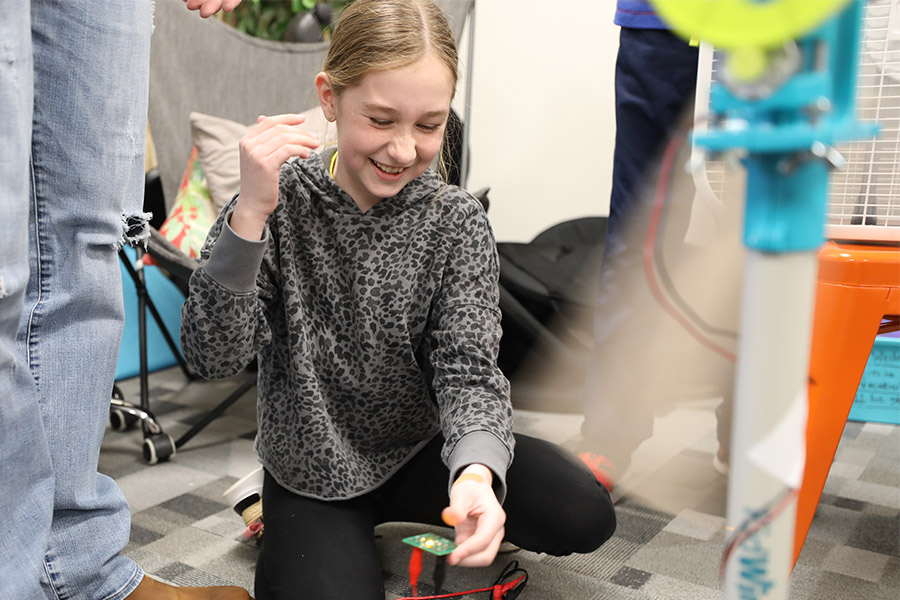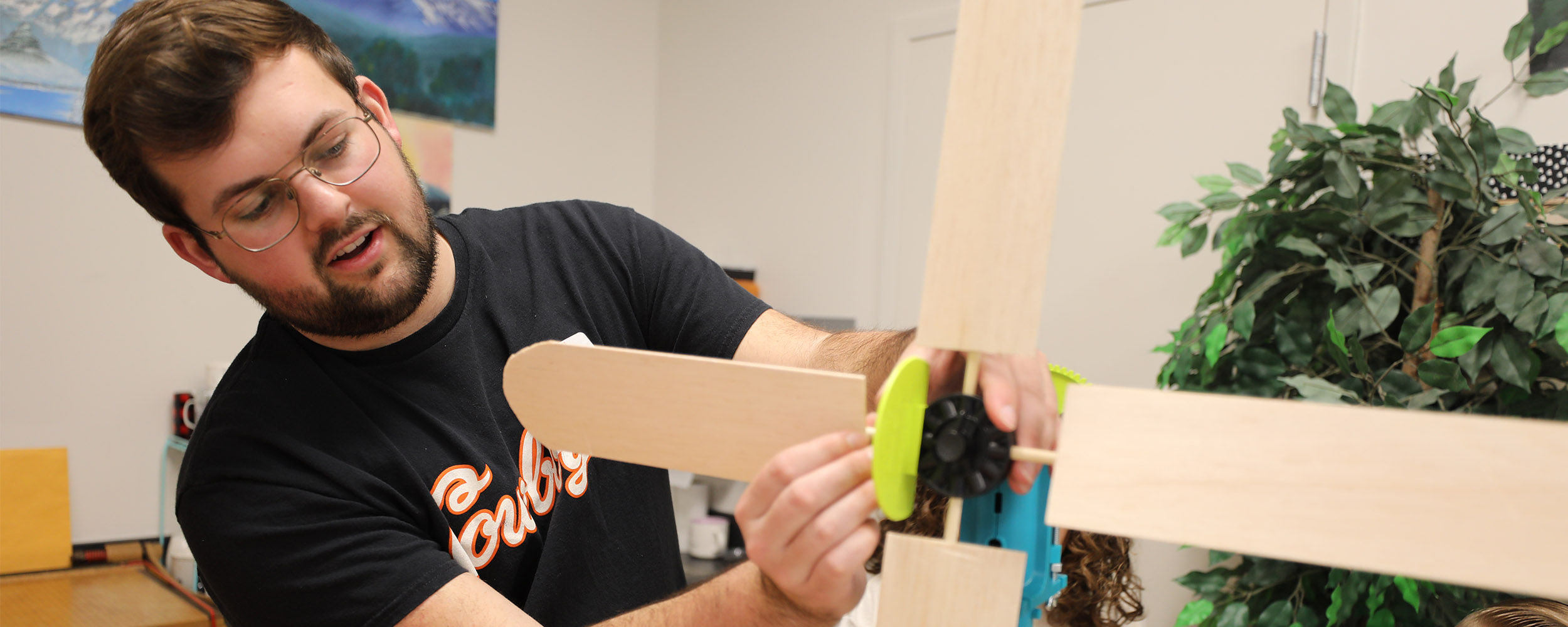
The Cyclone Cowboys advance in the 2023 Collegiate Wind Competition
Monday, April 10, 2023
Media Contact: Kristi Wheeler | Manager, CEAT marketing and Communications | 405-744-5831 | kristi.wheeler@okstate.edu
Oklahoma State University was one of the finalists selected by the U.S. Department of Energy to participate in phase two of the 2023 Collegiate Wind Competition (CWC).
The CWC is an annual competition that aims to prepare college students for jobs in the wind energy workforce through real-world, wind energy technology, project development and outreach experience. OSU’s team, the Cyclone Cowboys, was selected as one of the 13 finalists in the team’s first year to participate in the competition.
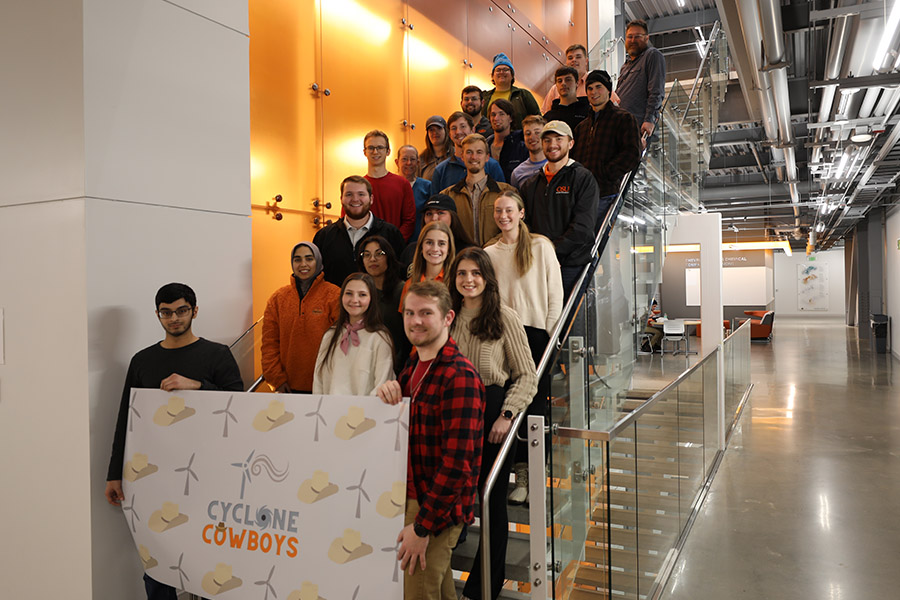
“We were selected due to all of the hard work and long hours that everyone on the team has put in. The team consists of many people with a wide range of skills that have really come together as a unit. It has been very rewarding to be a part of.”
As a first-year competition team, the Cyclone Cowboys started small and have worked toward expansion. The team has recruited over 19 new members since the fall 2022 semester.
“When I started, our team was only 11 people and the workload was very high,” said Tristan Kohn, outreach team lead. “I tried to help my team out by recruiting people to help with designing and outreach. Once I had people who could help with outreach, we made several efforts to recruit more and promote our team. This resulted in us having around 30 team members at the start of the spring semester, which is awesome because now we can put even more effort into winning the competition.”
The team consists of 18 seniors and many underclassmen. The Cyclone Cowboys are made up of students in various schools within the College of Engineering, Architecture and Technology (CEAT). The team leads for the project are:
- Sahir Virani - Overall team lead and electrical lead (electrical engineering)
- Tristan Kohn - Outreach team lead (mechanical engineering)
- Ben Marquis - Turbine design team lead (mechanical engineering technology)
- Hunter Reitze - Wind farm site design team lead (mechanical engineering technology)
“Starting off with such a small team put a lot of pressure on us and we all had a lot on our plates and were having to deal with many things at once,” said Virani, overall team lead and electrical lead. “We have worked tirelessly to reach our goals, and we are excited that we have made it to phase two.”
This semester the team consists of 30 people, which gives them the capability to expand their workload and increase the quality of their work. Through the additional help from advisors the team is prepared to attend the competition in May.
The selected finalists were based on evaluation of their preliminary design report for a prototype wind turbine, preliminary design for a hypothetical offshore wind farm site, a community education and outreach plan and a report on the relationships each team has established with members of the wind industry.
The team is now concentrating on three tasks for the competition; turbine design, off-shore wind farm design and outreach. Phase two will close at the CWC final event this spring, where the teams will present their work to a panel of judges.
“This is something I would like to lead going forward, so anyone interested in participating in next year's competition should contact me or one of my team leads,” Lannan said. “You do not have to be part of any particular degree program to participate. Currently, we have student involvement from electrical and computer, mechanical and aerospace, civil, mechanical engineering technology, chemical and industrial engineering students. We would love to expand this to include more schools and colleges beyond CEAT.”
Outreach component
As part of the outreach component, the CWC team contacted Mary Tran, CEAT program manager outreach DOD STEM, for ideas on ways they could engage K-12 students.
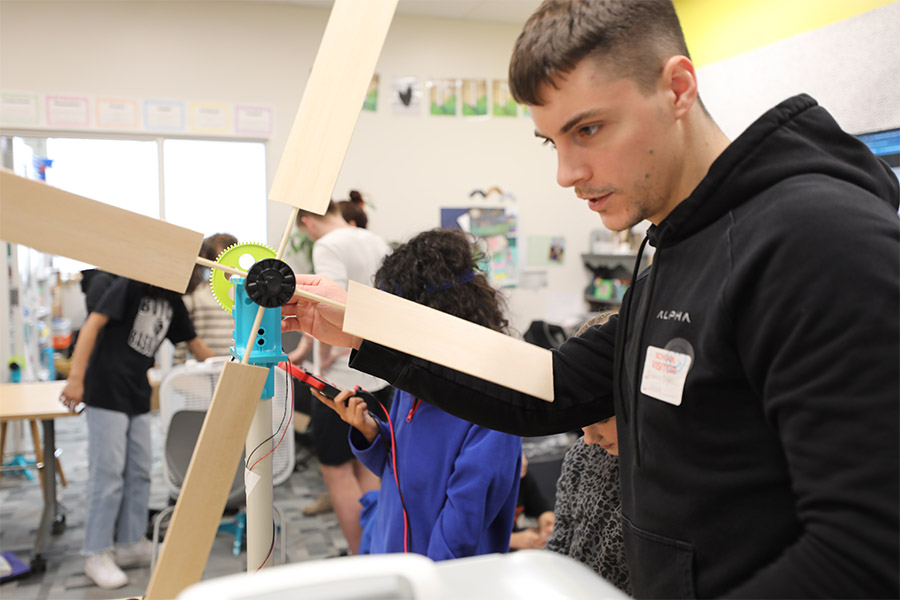
The Westwood students have been working on various projects that coincided with themes in the books such as reverse engineering AM/FM radios to explore the connection of energy and power sources.
“In an effort to merge STEM learning with literacy, our fourth and fifth graders took on the challenge of reading The Boy Who Harnessed the Wind this semester,” Gray said. “With CEAT’s partnership, we were able to experience much of the learning William Kamkwamba does in his book. The culminating event in our book was when William built a windmill that produced ‘electric wind’ out of things he found lying around.”
Lannan and the CWC team brought more than 20 wind kits to the school and worked with nearly 80 fourth and fifth graders over the course of a week to help them experiment with the various transducers of each wind turbine to maximize electrical output.
“Each of the Cyclone Wind Team students that visited our classroom were professional,
patient with the multitude of questions and truly engaged students in problem-solving
at a high level,” said Gray. “Even after they left, my kids continued to experiment
with the shape and length of their air foils to see whether those changes increased
or decreased the wind turbine's efficiency. We have reached out with questions since
then and have always received quick and thoughtful responses that help us continue
to learn about wind energy.
Gray’s students are now building their own windmills out of "found objects" based on what they learned from Lannan and his team. She is grateful for OSU CEAT's partnership and the students’ willingness to spend time teaching the kids about wind energy.
“The CWC team's activities with the students helped to solidify the knowledge they had gained so far this semester, in addition to grounding their understanding of wind energy through wind turbine kits,” Tran said. “Afterwards, the students will apply their new experiences with a capstone project.”
“The STEM activities at Westwood Elementary and the Cyclone Cowboys received financial backing from the School of Electrical Engineering’s Renewable and Innovative Sustainable Energy (RAISE) program, which is funded by a generous donation from the Martin Family Foundation,” said Jeffrey Young, department head of electrical and computer engineering.
“This program is designed to RAISE awareness and to foster a passionate interest in renewable and sustainable energy technologies that will shape the world for a greener tomorrow,” said Young. “Participants include K-12 students, who will be tomorrow’s engineers, and college engineering and architecture students, who are shaping the world today. To date, RAISE has funded tours of photovoltaic solar farms, STEM outreach activities, architecture and engineering design projects, scholarships and student competitions with a singular focus on educating people of all age groups from all walks of life about clean energy technologies.”
Oklahoma State students work with Westwood Elementary studentsAs part of the outreach component of the Collegiate Wind Competition, Cyclone Cowboys team members teach Westwood Elementary students how to build windmills to create electric energy.
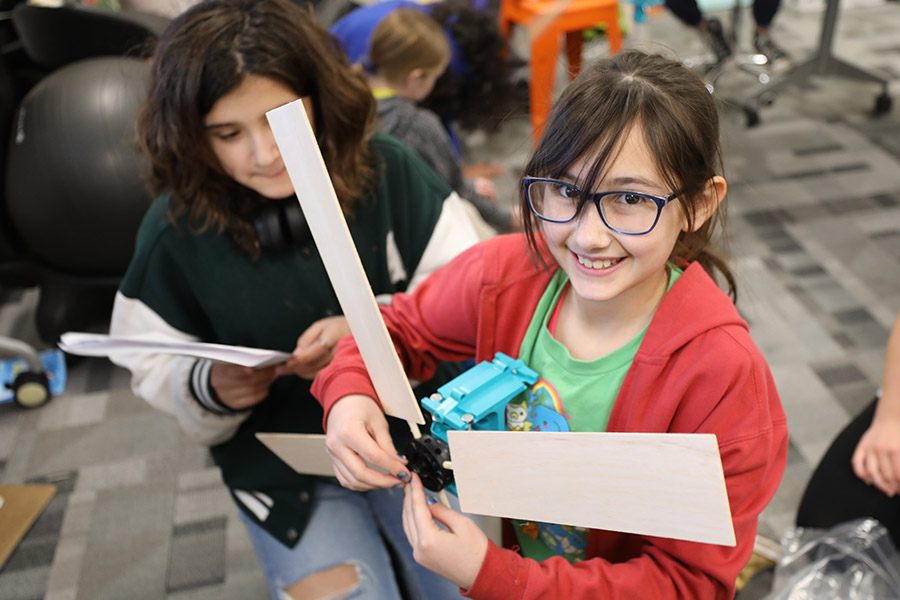

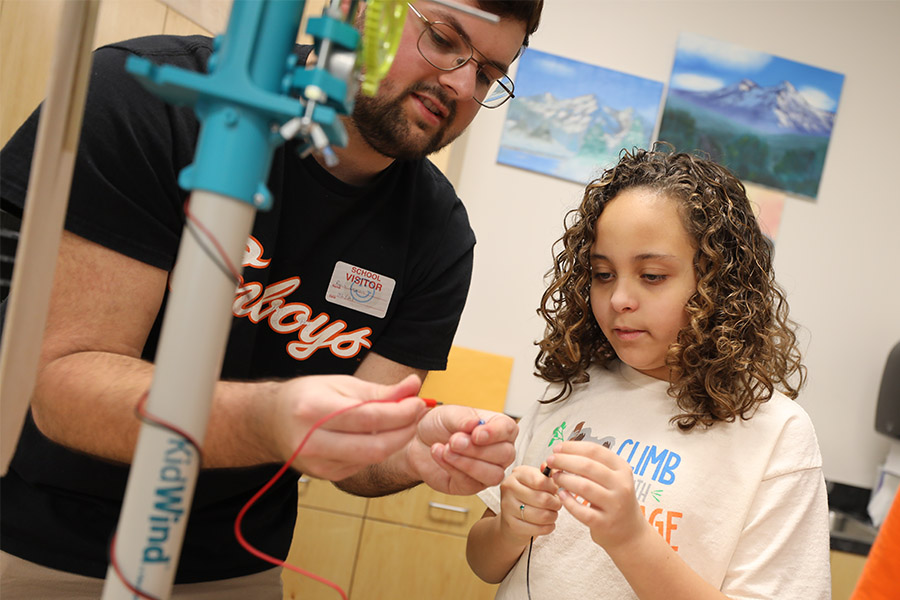

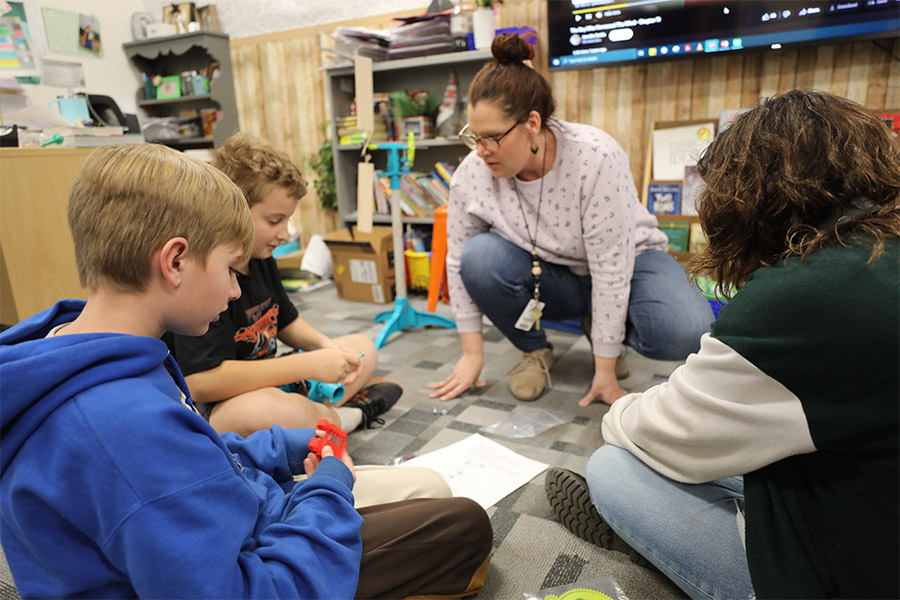

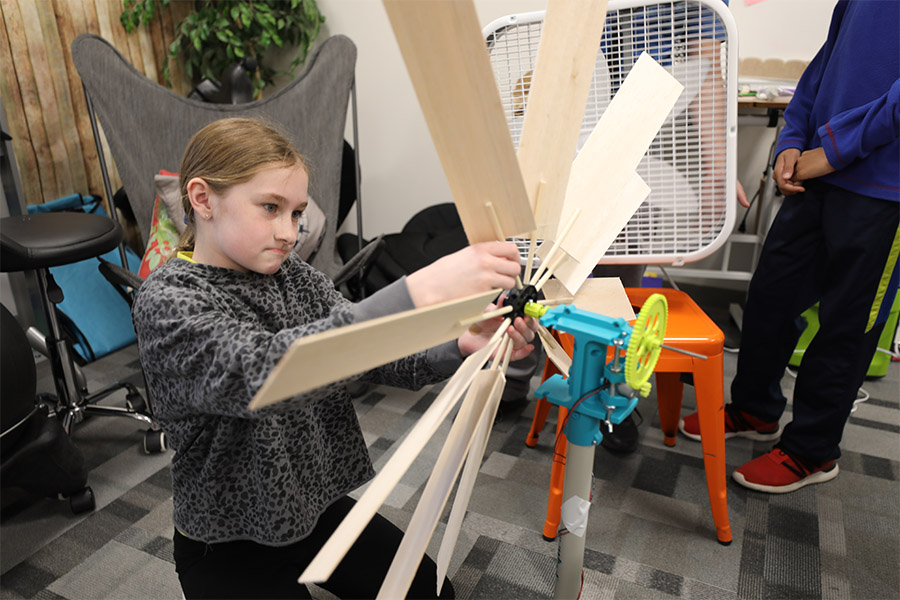

Story By: Bailey Sisk | basisk@okstate.edu

